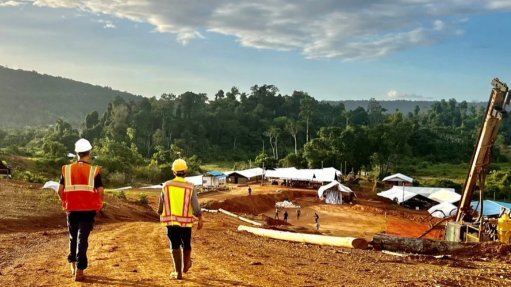Australian hydrogen offers massive potential - MCA
PERTH (miningweekly.com) – A new report by the Minerals Council of Australia (MCA) has found that Australia had the potential to be a significant provider of clean hydrogen, and could potentially be a leader in clean ammonia.
MCA CEO Tania Constable noted that with substantial carbon capture, utilisation and storage (CCUS) sites in Victoria and Queensland, competitive and accessible coal reserves, natural gas and significant renewable energy generation capacity, Australia was well placed to meet growing international and domestic demand for this important fuel.
“Australia continues to work with its partners on leading-edge energy innovation. With Japan, a significant investor in research, development and deployment, Australian industry is working to deliver long-term supplies of clean hydrogen and ammonia, such as through the Hydrogen Energy Supply Chain project in Victoria, using gasified brown coal.
“At the same time, Australia is investing in the development of CCUS sites which will be vital in creating a zero emissions fuel, such as the Carbon Transport and Storage Company’s project in the Surat basin, and the CarbonNet infrastructure and storage project in Victoria.
"Large-scale hydrogen and ammonia are expensive today, but ingenuity and hard work can deliver a competitive product to meet a pressing demand.”
Constable said that clean hydrogen played a significant role in most scenarios under which the globe decarbonised by 2050, with the International Energy Agency suggesting clean hydrogen production would need to double by 2030 and increase six-fold by 2050 to meet this target. This is an increase from current annual production levels of around 90-million tonnes to more than 530-million tonnes.
The report pointed to research from ACIL Allen, which assessed Australia’s hydrogen exports by 2040 to be between 0.62-million tonnes and 3.2-million tonnes based on relatively conservative assumptions. The value of these exports was estimated at around A$13.4-billion.
“Australia can be a low-cost source of clean hydrogen and ammonia. Ammonia in particular offers real prospects for decarbonising global shipping fleets, fertiliser production and electricity generation. This will require development of new pipeline and storage infrastructure including at ports,” Constable said on Monday.
“To realise this potential, federal and state governments need to focus on removing regulatory barriers, including expediting approval processes for associated infrastructure like pipelines, hydrogen fuel stations and ammonia storage.”
The report also noted that strong support for innovation would be essential over the next decade, especially for demonstration projects. It added that international certification, standardisation and regulation would be basic to ensuring low-carbon hydrogen reaches its full potential. This will be fundamental to developing a global hydrogen market that avoids transfer of carbon emissions from one country to another.
The report noted that a final policy strand would be intensified cooperation between countries, notably potential importing and exporting countries, to develop newer cost-effective technologies and the supply chains needed to make large-scale international trade a reality.
“The Australian resources sector will play a critical role in delivering the resources required for global decarbonisation. More than just hydrogen and ammonia, this also includes various minerals that form the basis of new storage technologies and electrolysers. As part of this, federal and state governments should be considering how best to develop downstream processing for lithium, cobalt, nickel and the range of rare earths,” Constable said.
Comments
Press Office
Announcements
What's On
Subscribe to improve your user experience...
Option 1 (equivalent of R125 a month):
Receive a weekly copy of Creamer Media's Engineering News & Mining Weekly magazine
(print copy for those in South Africa and e-magazine for those outside of South Africa)
Receive daily email newsletters
Access to full search results
Access archive of magazine back copies
Access to Projects in Progress
Access to ONE Research Report of your choice in PDF format
Option 2 (equivalent of R375 a month):
All benefits from Option 1
PLUS
Access to Creamer Media's Research Channel Africa for ALL Research Reports, in PDF format, on various industrial and mining sectors
including Electricity; Water; Energy Transition; Hydrogen; Roads, Rail and Ports; Coal; Gold; Platinum; Battery Metals; etc.
Already a subscriber?
Forgotten your password?
Receive weekly copy of Creamer Media's Engineering News & Mining Weekly magazine (print copy for those in South Africa and e-magazine for those outside of South Africa)
➕
Recieve daily email newsletters
➕
Access to full search results
➕
Access archive of magazine back copies
➕
Access to Projects in Progress
➕
Access to ONE Research Report of your choice in PDF format
RESEARCH CHANNEL AFRICA
R4500 (equivalent of R375 a month)
SUBSCRIBEAll benefits from Option 1
➕
Access to Creamer Media's Research Channel Africa for ALL Research Reports on various industrial and mining sectors, in PDF format, including on:
Electricity
➕
Water
➕
Energy Transition
➕
Hydrogen
➕
Roads, Rail and Ports
➕
Coal
➕
Gold
➕
Platinum
➕
Battery Metals
➕
etc.
Receive all benefits from Option 1 or Option 2 delivered to numerous people at your company
➕
Multiple User names and Passwords for simultaneous log-ins
➕
Intranet integration access to all in your organisation

















